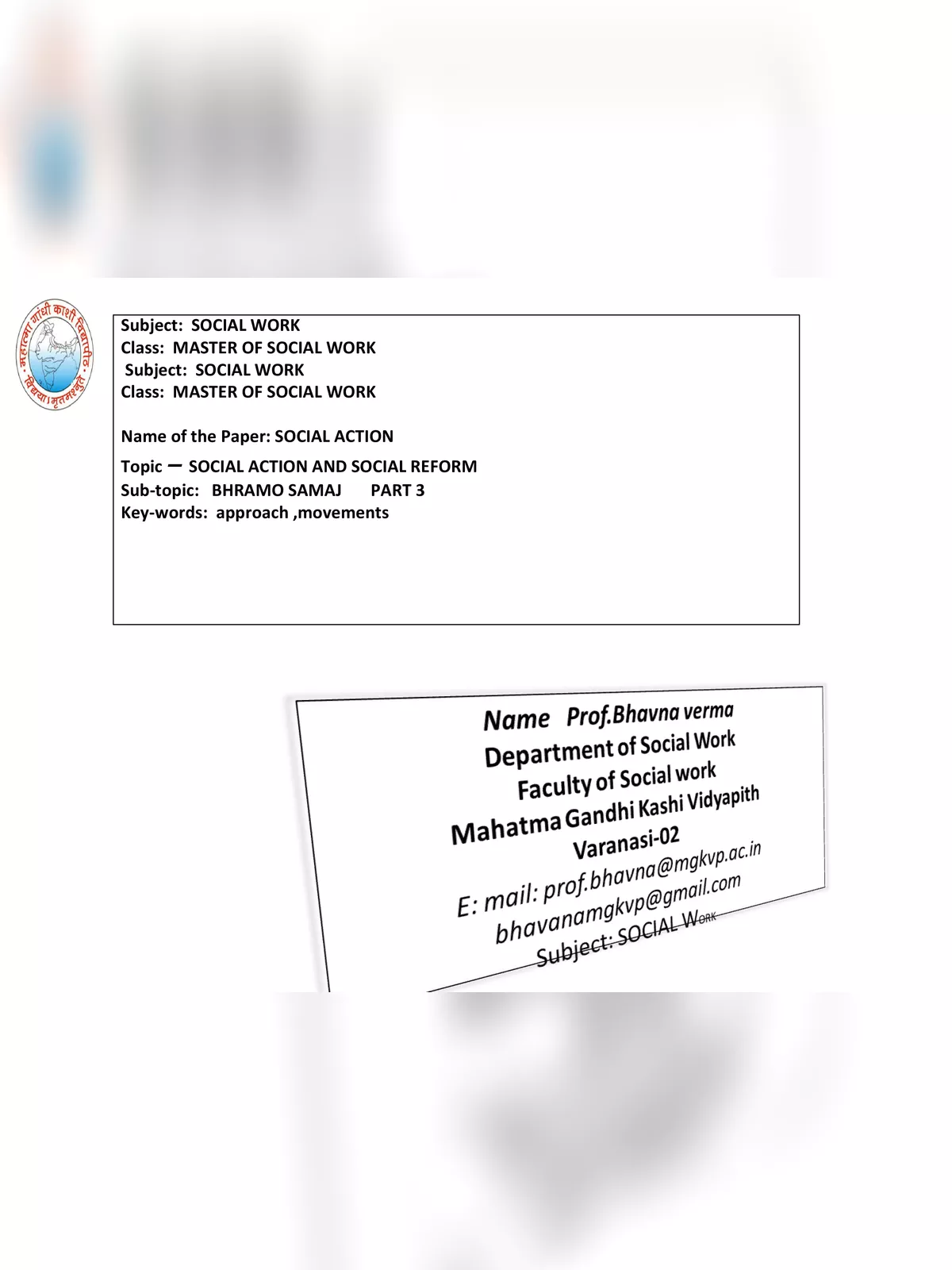Brahmo Samaj - Summary
The Brahmo Samaj is a significant movement within the Brahmo religion, mostly seen today as the Adi Dharm. This movement gained prominence after its decline in Bengal, following the departure of the Tattwabodini Sabha in 1859. Founded by Raja Ram Mohun Roy in 1828, the Brahmo Samaj Movement is essential to India’s reform movements, aiming to bring about a renaissance in Bengal by fighting against social evils like Sati and the caste system while promoting educational, religious, and social reforms.
Brahmo Samaj – An Overview
The Brahmo Samaj began as a monotheistic sect of Hinduism in 1828, arising from gatherings of Bengalis in Calcutta. A key figure in this movement, Ram Mohun Roy, was instrumental in forming the Brahmo Sabha. He traveled to England in 1831 as a reforming ambassador and passed away there in 1833.
The main goal of the Brahmo Samaj is to worship one eternal God. It strongly opposes priesthood, rituals, and sacrifices, choosing instead to focus on prayer, meditation, and the study of scriptures. In 1814, Raja Ram Mohun Roy established the “Atmiya Sabha,” which eventually became known as the Brahmo Samaj in 1828. Following Roy, Devendranath Thakur continued his work, and Keshav Chandra Sen later joined the movement. After some disagreements, Keshav Chandra Sen founded the “Bharatvarsha Brahmo Samaj” in 1866.
Main Objectives of Brahmo Samaj
- God: The Brahmo Samaj believes in an ‘Infinite Singularity,’ which is seen as infinite, indivisible, imperceptible, and undefinable. They reject the ideas of Avatars, reincarnation, and rebirth, along with idolatry and polytheism.
- Love: The movement promotes love and respect for all living beings while advising followers against idolization, directing worship solely towards the Singularity, or “Brahman.”
- Scripture: Followers of the Brahmo Samaj do not recognize any religious texts, prophets, or intermediaries between Brahman and the human soul, nor do they accept Karma teachings.
- Though adherents may personally believe in Karma and reincarnation based on their individual perspectives.
- Liberation: The Brahmo Samaj acknowledges the soul’s immortality, destined to unite with Brahman, without promoting the idea of salvation or “Mukthi.”
- They reject beliefs in heaven and hell, valuing knowledge, truth, and free will.
- Righteousness is seen as the only true way of life, and the Samaj encourages secular principles while opposing divisive beliefs and coercive religious practices.
- Superstition: It actively fights against superstition and dogma. The abolition of practices like ‘Sati’ was one of the key motivations in forming the Brahmo Samaj.
- The Samaj insists that non-scientific rituals, priests, and places of worship like temples, churches, and mosques have little importance.
- It denounces all forms of totalitarianism and inequalities based on race, caste, religion, and other factors, recognizing that these disparities can lead to conflict.
Why Brahmo Samaj Matters
- The movement condemns polytheism and idol worship.
- The Samaj has rejected all beliefs in divine incarnations.
- It argues that no scripture has ultimate authority over reason and conscience.
- It critiques the caste system.
- However, it does not take a definitive stance on concepts like karma and the transmigration of souls.
Later on, after Keshav Chandra Sen’s daughter married a Cooch-Behar prince, many members opposed this as it contradicted Brahmo Samaj principles, leading to a division within the group.
Additionally, some members rejected his “Doctrine of God in Conscience,” which led to the creation of the Sadharan Brahmo Samaj in 1878, under the leadership of Anand Mohan Bose, Derozia Shib Chandra, Sivnath Shastri, and Vijay Krishna.
You can download the Brahmo Samaj PDF using the link provided below.
